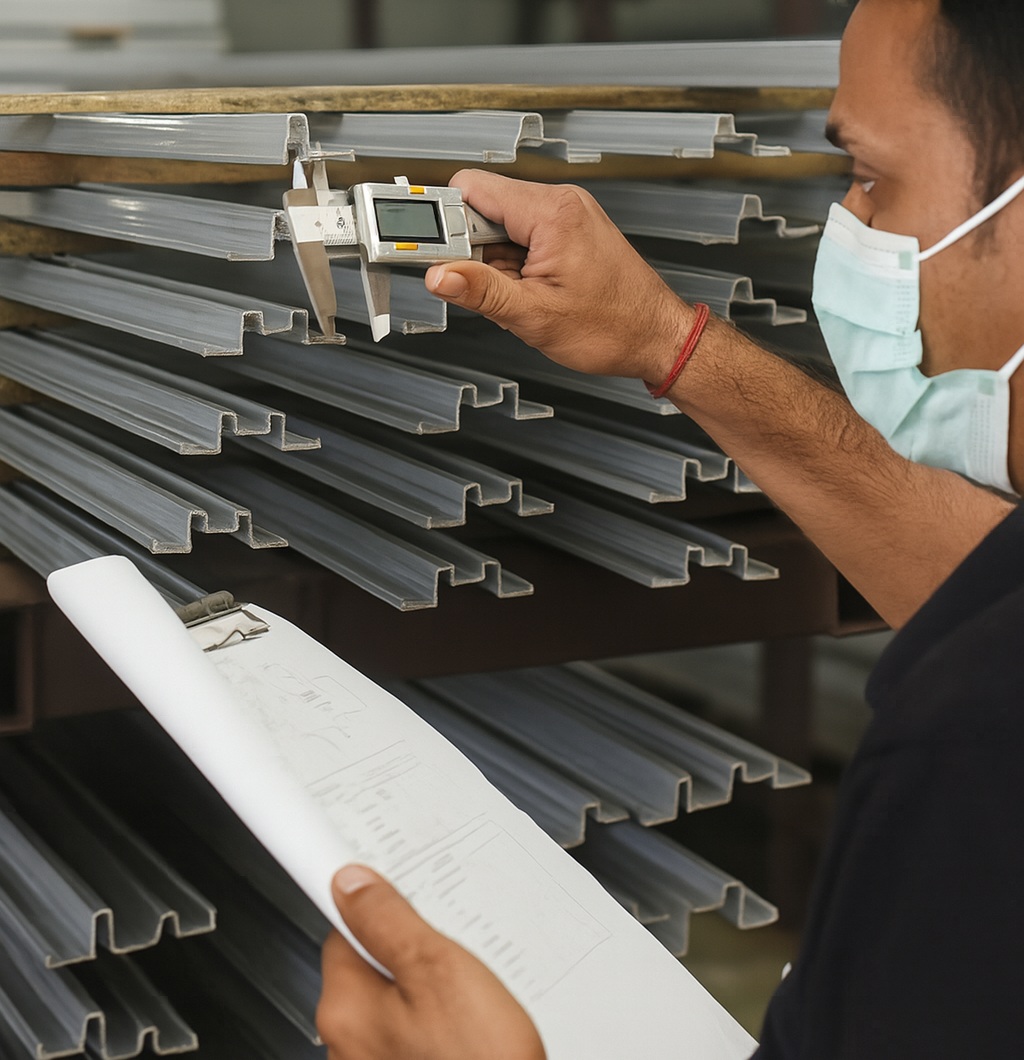Is Poor Raw Material Quality Affecting Your Aluminium Extrusions?
Admin
2025-07-15
Distorted profiles, uneven finishes and frustrated buyers! These are the harsh realities facing many traders and manufacturers in the aluminium extrusion industry.
Low-quality control isn’t only resulting in poor products. It eats into profits, causes rejections and ruins hard-earned customer trust. If you’ve ever dealt with unreliable aluminium billets, worn-out extrusion dies, or inconsistent anodised profiles from
your suppliers, you already know how high the stakes can get.
Add in increasing global competition and growing customer expectations for perfect products, and it’s clear why quality control has become a strategic priority.
In this blog, we discuss effective strategies for delivering best-in-class quality in aluminium extrusion and reveal the biggest challenges manufacturers and traders have to overcome to supply consistent, high-quality products.
Why Quality Control is Important in Aluminium Extrusion
Quality control in aluminium extrusion is essential to:
• Maintain dimensional accuracy (ensuring profiles fit intended designs)
• Mechanical properties (required strength, hardness, etc.)
• Surface finish (free of scratches)
• Overall product reliability
Poor quality not only leads to material waste but also risks customer dissatisfaction and even financial loss for traders who bank on consistent supply.
For instance, failing to meet tolerance specifications (often on the order of ±0.005 to 0.020 inches for extruded profiles) can result in parts that don’t fit properly.
A good QC plan involves checking all stages of the extrusion process, right from raw material supply to post-extrusion finishing, to detect and eliminate defects in time.
Quality Control in Raw Materials (Billets): Challenges & Solutions
The quality of your raw materials, billets in this case, is critical for successful aluminium extrusion. But if you import aluminium billets from various sources, they can have variations in chemical composition and homogeneity. This can impact the extrusion performance and end-product quality.
Even slight variations from alloy specifications (e.g, 6063, 6061, 6082, etc.) will influence:

• Extrudability: High silicon or iron levels may enhance die wear or lead to surface tearing.
• Mechanical properties: Inaccurate magnesium or silicon ratios in heat-treatable alloys affect strength and ductility.
• Anodising response: Too many impurities (e.g, iron, copper) induce streaks, discolouration or poor corrosion resistance.
• Weldability/formability: Alloys with excessive zinc, lead or bismuth can crack during post-processing.
But to beat these challenges, here are some industry best practices:
1. Have billets made with strict tolerances above normal limits (e.g. within 0.01% for critical elements).
2. Opt for billets cast with direct chill (DC) casting with advanced degassing & filtration systems for high purity. The major technologies used here are:
a. Rotary and in-line degassing units
b. Ceramic foam and deep-bed filtration systems
These improve mechanical properties and reduce extrusion defects.
3. Automated Ultrasonic Inspection (EMAT UT), Inline inspection using Electromagnetic Acoustic Transducers.
4. Source from billet manufacturers utilising spectrometric verification and ISO/ASTM conformant quality assurance protocols.
5. Opt for suppliers with homogenised billets, which provide improved microstructural homogeneity.
Another important aspect is to monitor for inclusions, oxide films, or microstructural inconsistencies. Physical and microscopic imperfections in billets, particularly non-metallic inclusions and oxide layers, can lead to:
• Surface streaks or blisters on extruded profiles
• Die clogging and increased maintenance
• Reduced mechanical properties or brittle fracture risks
• Non-uniform extrusion flow, leading to shape distortion
Quality Control in Aluminium Extrusion Process: Challenges & Solutions
1. Die Design and Maintenance
Complex profiles need complex die designs, which are more subject to excessive wear and deformation. Poorly maintained dies can lead to:
• Dimensional inaccuracies
• Surface defects
• Increased downtime
Solution: Implement a die maintenance schedule and invest in high-quality dies.
But how can you extend the life of dies?
a. Regular cleaning and polishing to clean buildup
b. Regular re-hardening (e.g. nitriding) of the die surface
Maintaining dies in good condition yields consistent profiles.
2. Extrusion Process Control
Maintaining consistent process parameters, such as temperature, pressure, and extrusion speed, poses a major challenge on high-speed production lines. Minor variations usually lead to:
• Warping
• Surface cracks
• Blisters
• Dimensional inaccuracies
For instance, if the system overheats a billet, the metal flows too freely. This results in cracks or surface defects. But if the billet stays too cold, it may stick in the die and damage the tooling.
Solution: Automation and advanced monitoring help operators maintain optimal conditions in real time. Modern extrusion lines rely on sensors, such as infrared pyrometers, and feedback control systems to maintain temperature and speed within ideal limits.
For example, the system automatically adjusts the press speed based on the profile’s exit temperature, preventing overheating and ensuring consistent quality.
3. Post-Extrusion Inspection
Many facilities still rely on manual inspection methods. But these are prone to human error. Limited detection of internal voids or surface flaws can result in defective products.
Solution: With the advancement of technologies in the industry, various approaches to inspection are available after the extrusion process. Some of them are:
a. Use accurate measuring devices and NDT techniques for inspection
b. Laser or vision-based systems automatically inspect dimensions and surfaces
c. For internal soundness, NDT methods such as ultrasonic or X-ray scans will detect hidden defects
Upgraded equipment and inspection tools lower the chances of poor quality outputs.
Read AL Circle’s e-Magazine to discover how smart handling systems and other technologies are powering high-performance and digitally agile operations in the aluminium industry.
By focusing on these solutions, both manufacturers and traders can ensure the production of high-quality extrusion products, strengthen customer trust, and position themselves as leaders in a competitive market.
Conclusion
Achieving consistent quality in aluminium extrusion isn’t just about ticking boxes. It’s a careful balance of precision and the right tools. Challenges will always be part of the process, but staying one step ahead with smart quality checks, modern tech, and trusted partnerships makes a big difference.
For buyers, working with manufacturers who take quality seriously is not just a reassurance. It’s essential for building a dependable supply chain that delivers, time and again. Whether your need is for aluminium extrusions in construction, automotive, solar or industrial applications, explore our product listings or reach out directly for your metal trade requirements.
For sellers, showcasing your capabilities to a global audience can open doors to more RFQs and help you connect with serious buyers worldwide. Create your company page with us to expand your reach globally.
Categories
Raw Materials
Scrap
Consumables
Primary Aluminium
Secondary Aluminium
Equipment
Technology
Downstream Products
Finished Products
Utilities
Services
Others
Recent Blogs
Subscribe to newsletter
Connect with us











